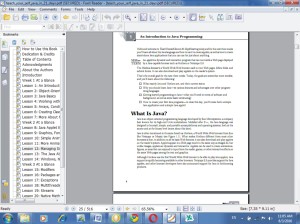KEY FACTS
Lassa fever is an acute viral haemorrhagic
illness of 1-4 weeks duration that occurs in
West Africa.
The Lassa virus is transmitted to humans via
contact with food or household items
contaminated with rodent urine or faeces.
Person-to-person infections and laboratory
transmission can also occur, particularly in
hospitals lacking adequate infection prevent
and control measures.
Lassa fever is known to be endemic in Benin
(where it was diagnosed for the first time in
November 2014), Guinea, Liberia, Sierra Leone
and parts of Nigeria, but probably exists in
other West African countries as well.
The overall case-fatality rate is 1%. Observed
case-fatality rate among patients hospitalized
with severe cases of Lassa fever is 15%.
Early supportive care with rehydration and
symptomatic treatment improves survival.
BACKGROUND
Though first described in the 1950s, the virus
causing Lassa disease was not identified until
1969. The virus is a single-stranded RNA virus
belonging to the virus family Arenaviridae .
About 80% of people who become infected
with Lassa virus have no symptoms. One in
five infections result in severe disease, where
the virus affects several organs such as the
liver, spleen and kidneys.
Lassa fever is a zoonotic disease, meaning
that humans become infected from contact
with infected animals. The animal reservoir, or
host, of Lassa virus is a rodent of the genus
Mastomys, commonly known as the
“multimammate rat.” Mastomys rats infected
with Lassa virus do not become ill, but they
can shed the virus in their urine and faeces.
Because the clinical course of the disease is
so variable, detection of the disease in
affected patients has been difficult. However,
when presence of the disease is confirmed in a
community, prompt isolation of affected
patients, good infection protection and control
practices and rigorous contact tracing can
stop outbreaks.
SYMPTOMS OF LASSA FEVER
The incubation period of Lassa fever ranges
from 6-21 days. The onset of the disease,
when it is symptomatic, is usually gradual,
starting with fever, general weakness, and
malaise. After a few days, headache, sore
throat, muscle pain, chest pain, nausea,
vomiting, diarrhoea, cough, and abdominal
pain may follow. In severe cases facial
swelling, fluid in the lung cavity, bleeding
from the mouth, nose, vagina or
gastrointestinal tract and low blood pressure
may develop. Protein may be noted in the
urine. Shock, seizures, tremor, disorientation,
and coma may be seen in the later stages.
Deafness occurs in 25% of patients who
survive the disease. In half of these cases,
hearing returns partially after 1-3 months.
Transient hair loss and gait disturbance may
occur during recovery.
Death usually occurs within 14 days of onset
in fatal cases. The disease is especially severe
late in pregnancy, with maternal death and/or
fetal loss occurring in greater than 80% of
cases during the third trimester.
TRANSMISSION
Humans usually become infected with Lassa
virus from exposure to urine or faeces of
infected Mastomys rats. Lassa virus may also
be spread between humans through direct
contact with the blood, urine, faeces, or other
bodily secretions of a person infected with
Lassa fever. There is no epidemiological
evidence supporting airborne spread between
humans. Person-to-person transmission
occurs in both community and health-care
settings, where the virus may be spread by
contaminated medical equipment, such as re-
used needles. Sexual transmission of Lassa
virus has been reported.
Lassa fever occurs in all age groups and both
sexes. Persons at greatest risk are those living
in rural areas where Mastomys are usually
found, especially in communities with poor
sanitation or crowded living conditions.
Health workers are at risk if caring for Lassa
fever patients in the absence of proper barrier
nursing and infection control practices.
DIAGNOSIS
Because the symptoms of Lassa fever are so
varied and non-specific, clinical diagnosis is
often difficult, especially early in the course of
the disease. Lassa fever is difficult to
distinguish from other viral haemorrhagic
fevers such as Ebola virus disease; and many
other diseases that cause fever, including
malaria, shigellosis, typhoid fever and yellow
fever.
Definitive diagnosis requires testing that is
available only in specialized laboratories.
Laboratory specimens may be hazardous and
must be handled with extreme care. Lassa
virus infections can only be diagnosed
definitively in the laboratory using the
following tests:
antibody enzyme-linked immunosorbent assay
(ELISA)
antigen detection tests
reverse transcriptase polymerase chain
reaction (RT-PCR) assay
virus isolation by cell culture.
TREATMENT AND VACCINES
The antiviral drug ribavirin seems to be an
effective treatment for Lassa fever if given
early on in the course of clinical illness. There
is no evidence to support the role of ribavirin
as post-exposure prophylactic treatment for
Lassa fever.
There is currently no vaccine that protects
against Lassa fever.
PREVENTION AND CONTROL
Prevention of Lassa fever relies on promoting
good “community hygiene” to discourage
rodents from entering homes. Effective
measures include storing grain and other
foodstuffs in rodent-proof containers,
disposing of garbage far from the home,
maintaining clean households and keeping
cats. Because Mastomys are so abundant in
endemic areas, it is not possible to completely
eliminate them from the environment. Family
members should always be careful to avoid
contact with blood and body fluids while
caring for sick persons.
In health-care settings, staff should always
apply standard infection prevention and
control precautions when caring for patients,
regardless of their presumed diagnosis. These
include basic hand hygiene, respiratory
hygiene, use of personal protective equipment
(to block splashes or other contact with
infected materials), safe injection practices
and safe burial practices.
Health workers caring for patients with
suspected or confirmed Lassa fever should
apply extra infection control measures to
prevent contact with the patient’s blood and
body fluids and contaminated surfaces or
materials such as clothing and bedding. When
in close contact (within 1 metre) of patients
with Lassa fever, health-care workers should
wear face protection (a face shield or a
medical mask and goggles), a clean, non-
sterile long-sleeved gown, and gloves (sterile
gloves for some procedures).
Laboratory workers are also at risk. Samples
taken from humans and animals for
investigation of Lassa virus infection should
be handled by trained staff and processed in
suitably equipped laboratories.
On rare occasions, travellers from areas where
Lassa fever is endemic export the disease to
other countries. Although malaria, typhoid
fever, and many other tropical infections are
much more common, the diagnosis of Lassa
fever should be considered in febrile patients
returning from West Africa, especially if they
have had exposures in rural areas or hospitals
in countries where Lassa fever is known to be
endemic. Health-care workers seeing a patient
suspected to have Lassa fever should
immediately contact local and national
experts for advice and to arrange for
laboratory testing.
WHO RESPONSE
The Ministries of Health of Guinea, Liberia and
Sierra Leone, WHO, the Office of United States
Foreign Disaster Assistance, the United
Nations, and other partners have worked
together to establish the Mano River Union
Lassa Fever Network. The programme
supports these 3 countries in developing
national prevention strategies and enhancing
laboratory diagnostics for Lassa fever and
other dangerous diseases. Training in
laboratory diagnosis, clinical management,
and environmental control is also included. In
addition, a new ward dedicated to the care of
patients with Lassa fever is under
construction in Sierra Leone, sponsored by the
European Union.


